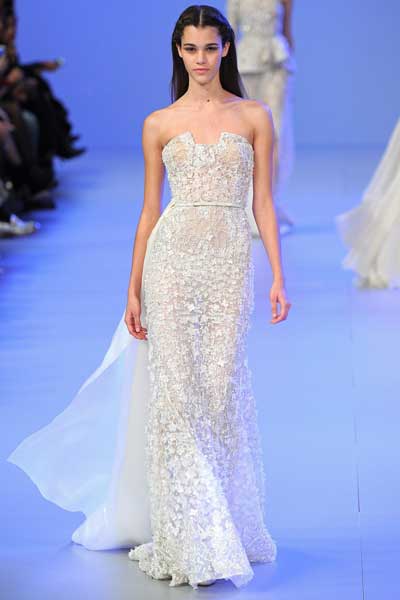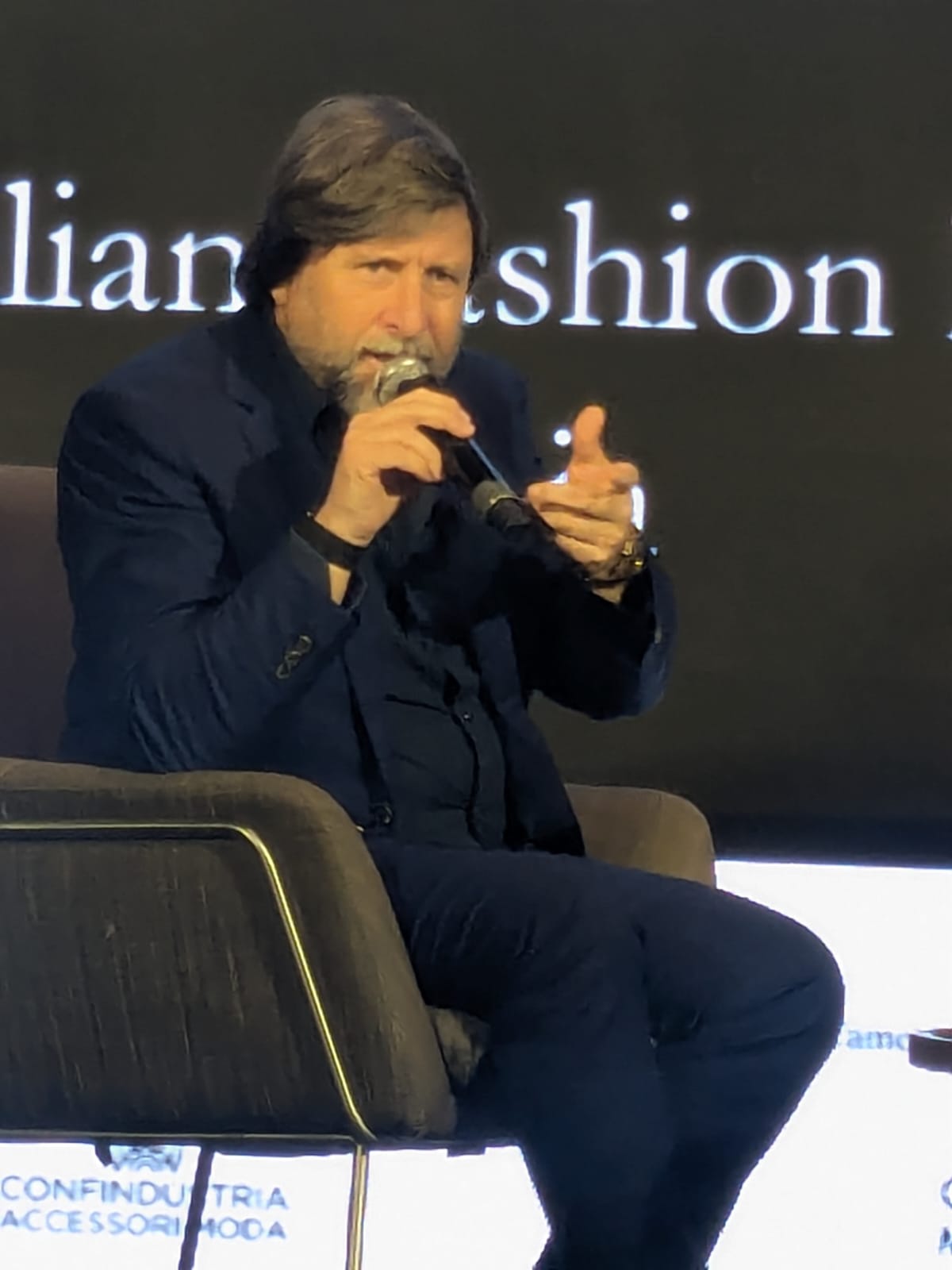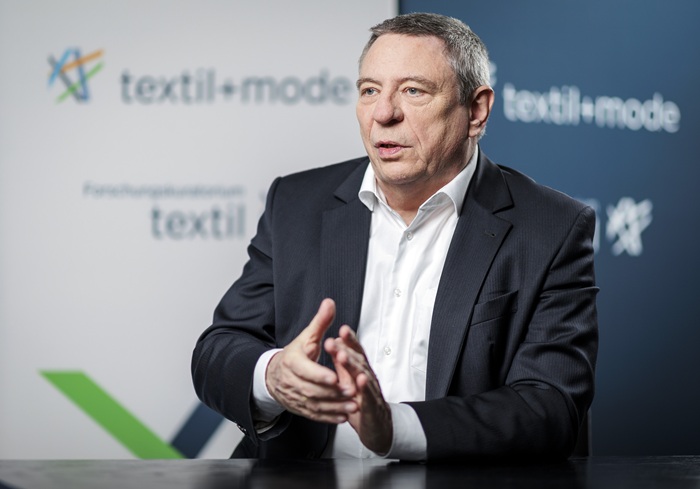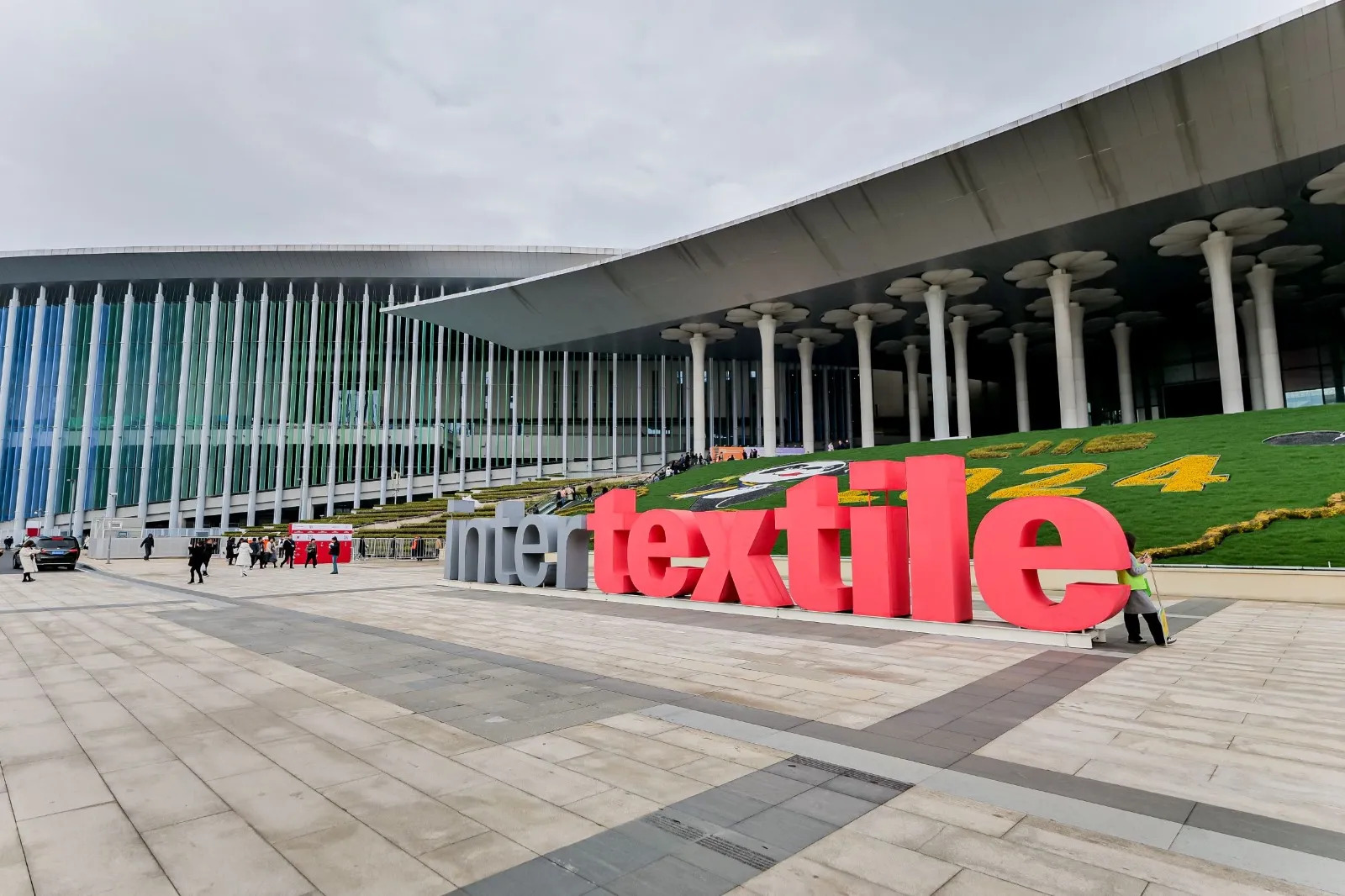FW
US apparel and textile imports from China surged 22.2 per cent in February compared to a year earlier. Overall, industry imports increased 12.4 per cent in February, with textile shipments rising 15 per cent year over year, and apparel imports up 9.2 per cent. For the year to February, apparel and textile imports rose 7.1 per cent, with apparel up 4.4 per cent and textiles ahead 9.3 per cent.
The overall US trade deficit in goods and services increased 1.6 per cent in February. The US and China have been volleying huge tariff threats at each other. But China is still by far the top supplier of apparel and textiles to the US.
Among the other top suppliers of apparel and textiles to the US, Cambodia posted a gain of 22.4 per cent. South Korea saw exports to the US increase 17.5 per cent. Among the other top Asian suppliers, Vietnam’s exports rose 5.7 per cent, Bangladesh’s shipments were up 5.1 per cent, Pakistan’s increased 4.1 per cent and Indonesia’s gained 1.7 per cent.
However, India’s shipments fell 0.8 per cent. India happens to be the second largest supplier for the category. Mexico’s shipments increased 4.7 per cent in February while Canada’s shipments rose 4.6 per cent.
TMAS (Textile Machinery Association of Sweden) is now firmly established in Vietnam. With its advanced production technology, innovative solutions and equipment it is helping build Vietnam into a leading textile and garment manufacturer globally.
TMAS provides customers with innovative products including machiney, equipment and solutions to support customers in their production processes. Its member companies are all well-established leaders in various areas of the textile manufacturing process. The companies offer a unique combination of production expertise, textile manufacturing knowledge, and superior products and services.
Vietnam is poised for expansive growth and development and TMAS member companies see the tremendous potential and endless possibilities for adding value to an important local industry. The Vietnamese textile and garment industry has a history that dates back hundreds of years. Today, there are over 6,000 textile and garment manufacturing companies with about 2.5 million employees, making Vietnam the third top garment exporter in the world. The textile industry is shifting over to new technologies and automation from lower end clothing items to high end fashion and top-quality garments.
TMAS has a strong commitment to promoting environmental and social sustainability, whereby smart solutions are of the highest priority. The goal of all member companies is always to achieve better performance and efficiency while maintaining the highest levels of quality.
Successful Turkish textiles producers has been recognised by Istanbul Textile and Raw Materials Exporters Association (İTHİB) at the Raffles Istanbul Zorlu Center on 23 March who contributed to the country’s economy with their achievements in the textiles sector.
The event was attended by Turkey’s Minister of economy Nihat Zeybekci, platinum and gold signs who were given to the companies that exported the most products in 2017.
The ceremony started with the speeches, by the most successful exporters in textiles and raw materials sector were awarded. 36 platinum plates and 58 gold plates were given out, and three companies received a special award at the end of the ceremony.
The textiles export leader was AKSA Acrylic Chemical Industry. AK-PA Textile Export Marketing Kordsa Teknik Tekstil AS, Zorlu Dış Ticaret and Zorluteks Textile Trading and Industry company Companies like Kadifeteks, Roja Brode Sanayi, were also recognised with the highest added value, and S3 Yarn, the company with the highest increase in exports.
Minister of Economy Nihat Zeybekci stated that investment incentive document worth over 125 billion liras will be given to investors. He further added that at end of the textiles in Turkey has never and will never come. Turkey will continue through different dimensions in textiles.
Ismail Gulle İTHİB president has promised to export US$ 12 billion in value in 2018, together with the sector representatives.
Japan-based Shima Seiki a leading computerised knitting machine manufacturer looks at Turkey as a strong market for its seam-free Wholegarment knitting technology that offers an alternative to labor-intensive manufacturing. The SDSONE APEX3 design system is at the core of the company’s Total Fashion System concept. With comprehensive support of the knit supply chain, APEX3 integrates every stage from planning and design to machine programming, production and even sales promotion into one smooth and efficient workflow. Photorealistic simulation capability allows virtual sampling to minimise the need for actual sample-making, reducing time, material and cost while increasing presentation quality in the sampling process.
APEX3 supports design and simulation in a variety of textile including flat knitting, circular knitting, weaving, pile weaving and printing for such industries as towel and home furnishings. The flagship MACH2XS Wholegarment knitting machine has original SlideNeedle on four needle beds and spring-loaded moveable sinkers with expanded patterning capability. The MACH2X in 18G is meant for producing refined ultrafine gauge items, the compact SWG091N2 for producing smaller Wholegarment items and accessories.
The SSR series offers industry-leading technology in an economical package, while the SCG122SN rounds out the flat knitting machine line-up with specialised coarse gauge knitting. The SFGI is a glove knitting machine. SIP is an inkjet printing machine.
Fimast will be held in Italy from May 30 to June 2, 2018. This is a show for hosiery and knitting machinery. The trade show will showcase the technological advancements among domestic and international exhibitors, presenting buyers with the excellence in the production of socks throughout the supply chain.
Dora Enrico will participate, presenting its expertise in production and regeneration of circular thread-cutting for socks and knitwear machines. Manifattura Cantù Egizio, a leading manufacturer of knitted and woven elastic bands and laces, will present its innovations. The company produces silicone top bands and laces for medical and compression stockings, bands and fabrics for orthopaedic supports, compression garments and medical devices, and other items.
Tagson, part of Stular plus, a premium business partner of Avery Dennison, will present its high quality pneumatic portable automated machines for tagging all kind of socks. Eneas Informatica, a leader in computer graphics, will present the complete solution for the hosiery and seamless industries. The company’s range includes, Eneas Designer 2018 that provides socks and seamless designers with the latest computer aided design technology, Eneas MaskDip 2018, a scanning, cleaning and color reduction package, and Eneas SimulaSock 2018 that enables the creation of full stitch effect socks designs entirely on computer.
The Europe-ietnam Free Trade Agreement (EVFTA) is expected to create growth momentum for Vietnam’s textile industry. The agreement is expected to be finalised this year. Once this happens, export tariff to the EU will reduce to zero from the current 7 to 17 per cent. The growth rate of garment exports from Vietnam to the EU market is predicted to reach 7 to 8 per cent per year.
In 2017, Vietnam’s textile and garment export turnover as a whole grew 10.23 per cent year-on-year. Turnover from the EU surged 6.3 per cent year-on-year. In addition, an optimistic EU economic outlook is also a positive signal for the development of the local textile and apparel industry.
The EU is the second largest import market of Vietnam’s textile and garment sector after the United States. In the case of stability in the global economy, especially in the EU, the difficulty associated with having orders similar to 2016 would not be repeated.
It would not be easy to make use of opportunities offered by the EVFTA. The garment industry in Vietnam must deal with many technical barriers for its products exported to the EU, including standards of production, packaging and labeling. The EU is known for being a fastidious market.
In a retaliatory move the Chinese Ministry of Commerce has announced plans to impose a 25 per cent tariff on 106 US goods, including agricultural products such as cotton, soybean, corn and beef. The effect of the Chinese tariff is expected to impact exports valued at around $50 billion from the US.
This move could affect the entire US cotton industry, as China imports a significant amount of US cotton each year, along with other leading importers like Vietnam, Turkey, Indonesia and Pakistan. This would seriously affect US cotton and agricultural exports and correspondingly affect US farmers feels Darren Hudson, Professor and Combest Chair of Agricultural Competitiveness at Texas Tech University. More cotton would be sent to Southeast Asia and away from China, he added.
In March, President Trump proposed a 25 per cent tariff on steel imports and 10 per cent on aluminium imports, while exempting some countries. This measure was aimed at protecting US jobs and American innovation and its industry. At that time, the effect on the US cotton industry was not foreseen to be serious as they felt that the Chinese retaliation would target US soybean.
"Thomson Reuters ‘State of the Global Islamic Economy Report’, recently reported that Muslim consumers’ spending on apparels was the highest in 2015 around $243 billion and is projected to touch $368 billion by 2021. As per Pew Research Center, Muslims are the fastest growing religious group in the world, estimated to increase the population of Islamic Faith by 70 per cent in the next 40 years. In order to tap this opportunity, brands are increasingly finding means & ways to lure this tribe."

Thomson Reuters ‘State of the Global Islamic Economy Report’, recently reported that Muslim consumers’ spending on apparels was the highest in 2015 around $243 billion and is projected to touch $368 billion by 2021. As per Pew Research Center, Muslims are the fastest growing religious group in the world, estimated to increase the population of Islamic Faith by 70 per cent in the next 40 years. In order to tap this opportunity, brands are increasingly finding means & ways to lure this tribe.
These reports point towards a critical aspect that age and location make a big difference when it comes to clothing in the Middle East, which is the largest region of concentration for the Muslim community. The way a certain set of people dress reveal not only their personality, but also the region and social class they belong to. In the Middle East, local traditions and Western fashion mix together to pave way for a new market which designers and brands are now eyeing with interest. When comparing the variables of age, economic class, and education, not all Muslim consumers exhibit same spending habits or fashion preferences. Millennials and Gen Z consumers in the region are increasingly moving towards westernised clothing concepts, reserving more traditional styles for ceremonial and religious occasions, while the older generations continue the trend of traditional garments.
Within the regions also, from Morocco to Oman, the concepts of modest dressing and traditional garments deviate from one country to another and the clothing is also hugely dictated by the climatic conditions prevalent in that area. Many women in Lebanon do not cover their head, but majority of women in Saudi Arabia still have to wear a niqab. People living in the cities are more attentive to the latest fashion trends, while those in smaller towns and rural areas are still conservative, following traditional norms.
Changing preferences
All Arab women wearing hijab seems to have become a stereotype today. Rising literacy rates and blurring boundaries point towards the acceptance of western clothing in these regions. Recently, Sheikh Abdullah al-Mutlaq, a member of the Council of Senior Scholars, and a senior member of top Muslim clerical body in Saudi Arabia, stated women need not wear loose-fitting, full-length robes symbolic of the Muslim faith known as the abaya. Some Muslim countries have even gone ahead and started following top fashion trends. These include: Lebanon, Dubai, Jerusalem and Jordan. In Lebanon, women have little in common with the fashion preferences of Saudi Arabian and UAE women. They are open to experimentation with westernised fashion concepts. Women prefer more revealing clothes with shorter hemlines and longer necklines. In countries like Saudi Arabia, Kuwait, Bahrain, Qatar, Oman, and Yemen, the emphasis is more on the traditional dress.
Multi-brand retailer stores expanding base
The younger cohort (people under the age of 30) in the UAE, Saudi or Qatar makes up more than half of their entire population. There are some 350 million people in these countries who are still below 26. While a bigger purchasing power lies with the older generation. With the country boasting of a wealthy consumer base in terms of GDP per capita the opportunities for luxury clothing are immense. Tapping huge potential, mainstream international brands have expanded their clothing lines into the Modest Fashion, launching across the region and also stocking modest fashion products. Brands such as Dolce and Gabbana, Burberry, Nike, and Uniqlo have introduced exclusive modest fashion ranges.
Meanwhile at International Fashion Weeks Muslim designers have emerged strong. All these together signal the dawn of a new era in fashion, which is set to challenge the conventional norms set by society over ages, and signals the advent of modest dressing. The level of success achieved by designers such as Elie Saab, Zuhair Murad and Rami Al Ali, is testimony of their rich culture, talent and innovative skillsets. It’s about time to give greater emphasis on nurturing and developing younger designers.
Retailer Kiabi is focusing on expanding its presence in Middle East, and recently inaugurated a new market to the list: the United Arab Emirates. With the help of local partner Al Futtaim Kiabi's has opened two stores. Al Futtaim opened a first shop at the Dubai festival city mall and another at the Ibn-Battuta Mall.
Kiabi main growth vector is international expansion and the latest market it entered is Dubai. According to Al Futtaim the company is also planning to set up a local e-store. Kiabi's objective is to finally become the leader in affordable family fashion in the entire Middle Eastern region.
Kiabi recorded a revenue of €1.9 billion, up 4.6 per cent in 2017. Besides its presence in Europe, the retailer plans to expand even in the Maghreb region and targeting the opening of its first stores in the major emerging markets of Brazil, China and India in 2018. By 2021 Kiabi plans to generate 50 per cent of its revenue outside France. The brands strategy relies on three vectors, a focus in those markets that are accessible for Kiabi through a subsidiary, multi-channel franchising for the less accessible markets and a purely online presence for market niches.
Apparel and textile major Arvind has launched its private label for men called Arvind Ready to Wear.
The new brand is targeted at the growing middle class segment in India.
The collection offers a wide array of work wear, leisure and ceremonial wear. It features linen blazers, bundis, chinos, shirts, linens, textured five-pocket chinos and more.
Arvind Ready to Wear will be available across 127 cities across the country. The entire range of products will be available at The Arvind Store outlets across the country and online.
The company also looks to increase its revenues and profits in the coming quarters as private labels usually give better margins as compared to licensed product brands.
The brand business of Arvind contributed Rs 961 crores to the overall revenue of the firm in the last quarter with profit after tax at Rs 90 crores. With its new private label the company will look to better these numbers in the next financial year.
Arvind has an unmatched portfolio of owned brands such as Flying Machine as well as licensed product brands such as Arrow, Gap, Gant, Izod, Aeropostale, Nautica, US Polo Assn., to name a few. The portfolio also includes retail brands like Unlimited, The Arvind Store, The Children’s Place and Hanes.













